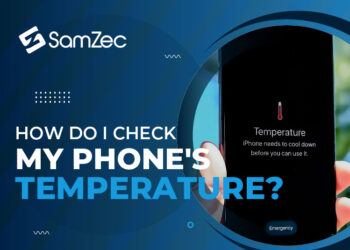Technology has shifted its advancements and thanks to the engineers for making our lives easier by developing more useful tools like 3D Printer. The 3D printer can be easily used to portray 3D images of the product; it could be anything that you can print from a 3D printer. At the industry level, there is no such need to find How Much Electricity A 3D Printer Uses. Still, if we need a 3D printer for our home or to complete our assignments then there is a bit of concern about the 3D printer’s electricity consumption.
In this blog, I will guide you through the information about how much electricity a 3D printer uses. And also with some details about what a 3D printer is so you can easily know the difference. Let’s start with a short introduction to 3D printers.
What is a 3D Printer?
The 3D printer is one of the most remarkable inventions of this era that helps bring digital models into reality cutting the virtual reality aspects. The 3D printer has different parts that are involved in crafting the object in the 3D model including Extruder (Feeding and melting the filament), Print Bed, Build Plate, Filament, and Nozzle, etc. A 3D printer works after depositing successive layers of material that is needed for printing – mostly plastic.
But some other materials are used instead of plastic like resin, metal, or even food-grade ingredients. All these materials are used for making 3-dimensional objects. The process is known as additive manufacturing just like traditional subtractive manufacturing techniques.
This is a brief detail about the 3D printer. Now let’s discuss the query “How much electricity does a 3d printer use?” Here are some key points about the electricity consumption of the 3D printer.
How Much Electricity Does A 3D Printer Use?
It is quite common that unless the filament is not hot the 3D printer is unable to print anything so it needs a specific amount of energy (Electric Current) for properly functioning and heating the filament and nozzle. The power consumption of the 3D printer depends on the following factors that include;
- Printer Size
- The size does matter as the larger 3D printer size uses a large amount of electricity for proper functioning and besides this, the larger size 3D printer will also have more powerful motors and healing elements
- Printer Settings
- It depends on the design you want to print from a 3D printer, the more complex the design the more power and time is consumed to print the object.
- Model Complexity
- It dictates the specification of the design that is going to be printed from the 3D printer. Sometimes the model has very fine details and takes maximum time to complete the object design.
- Filament Type
- The melting temperature varies with the material used to print the object. So this impacts the consumption of more power utilization.
On average, a desktop 3D printer consumes electricity within the range of 50 to 150 watts which is equivalent to the room light bulb. A 3D printer with 30A/12V utilizes 360 watts of electricity. It needs 205℃ temperature for the hotbed and also the reading for the heated bed temperature range is 60℃. A 3D Printer typically requires 70 watts per hour or in kilowatt-hours which is defined as 0.7 KWh for a 10-hour printing. The wattage of the 3D printer is adjustable as the normal working hour of a 3D printer is approximately 7 – 8 hours daily. FDM (Fused Deposition Modeling) is also known as FFF (Fused Filament Fabrication) a highly graded 3D printer that can continually work for more than 2 days or 24 hours.
Estimated Cost for One Hour
You can easily calculate the estimated cost of using the 3D printer for an hour just by putting values in the given formula and you will get the total cost along with the estimated value of electricity consumed.
- Electricity Price — if you know the cost per kilowatt hour, otherwise find the cost per kilowatt-hour.
- Printer Power Usage — read the manual guide or search for the maximum wattage of your 3D printer. Now there is only a simple calculation to know exactly how much electricity your 3D printer uses.
- Calculation — convert wattage (W) into kilowatts (KW) just like 100 watts > 0.1 kilowatts now to get the value multiply the kilowatt figure with your electricity price to get the cost for an hour. This is how you can calculate the cost of a 3D printer.
Features and Benefits of a 3D Printer
- Rapid Prototyping — it simply defines that you can craft any object by putting the design into the software of a 3D printer.
- Customized Production — everything is at your go just command the required design and there you go. The 3D printer will do the rest.
- Reduced Wastes — there are very less chances that your 3D printer will generate waste material after printing the object so it is a very useful material to buy.
- Complex Geometries — complex objects are hard to achieve with traditional printing methods.
Is it Right to Use 3D Printers at Home?
Absolutely Yes, there are many benefits of a 3D printer when it becomes the need for home usage. With a 3D printer, you can easily craft DIY methods. Some of the main advantages make it a worthwhile investment.
- Creativity and Easy Assignments — you can easily create your design car, electric circuit, plants, or trees, to give a vivid look to your projects or assignments.
- Hobbies and DIY Projects — you will be able to create custom parts, figurines, and other repair items within the house.
Final Thought
In this guide, the query “How much electricity does a 3D printer use” is dictated properly also how to calculate the power consumption of a 3D printer. In simple words, the maximum power consumption of a printer is 70 watts. If you are buying a 3D printer for your home ask the seller about its power consumption and if you want a low variant of the 3D printer then ask for that particular 3D printer.
I hope this guide has helped you identify the power consumption of a 3D printer and you can have a rough idea about the electricity utilization of your printer. Good luck with your purchase.




















